Creating Dashboards
Dashboards allow you to arrange multiple charts that are related to each other into a single view.
Checkout this tutorial on how to create your first dashboard:
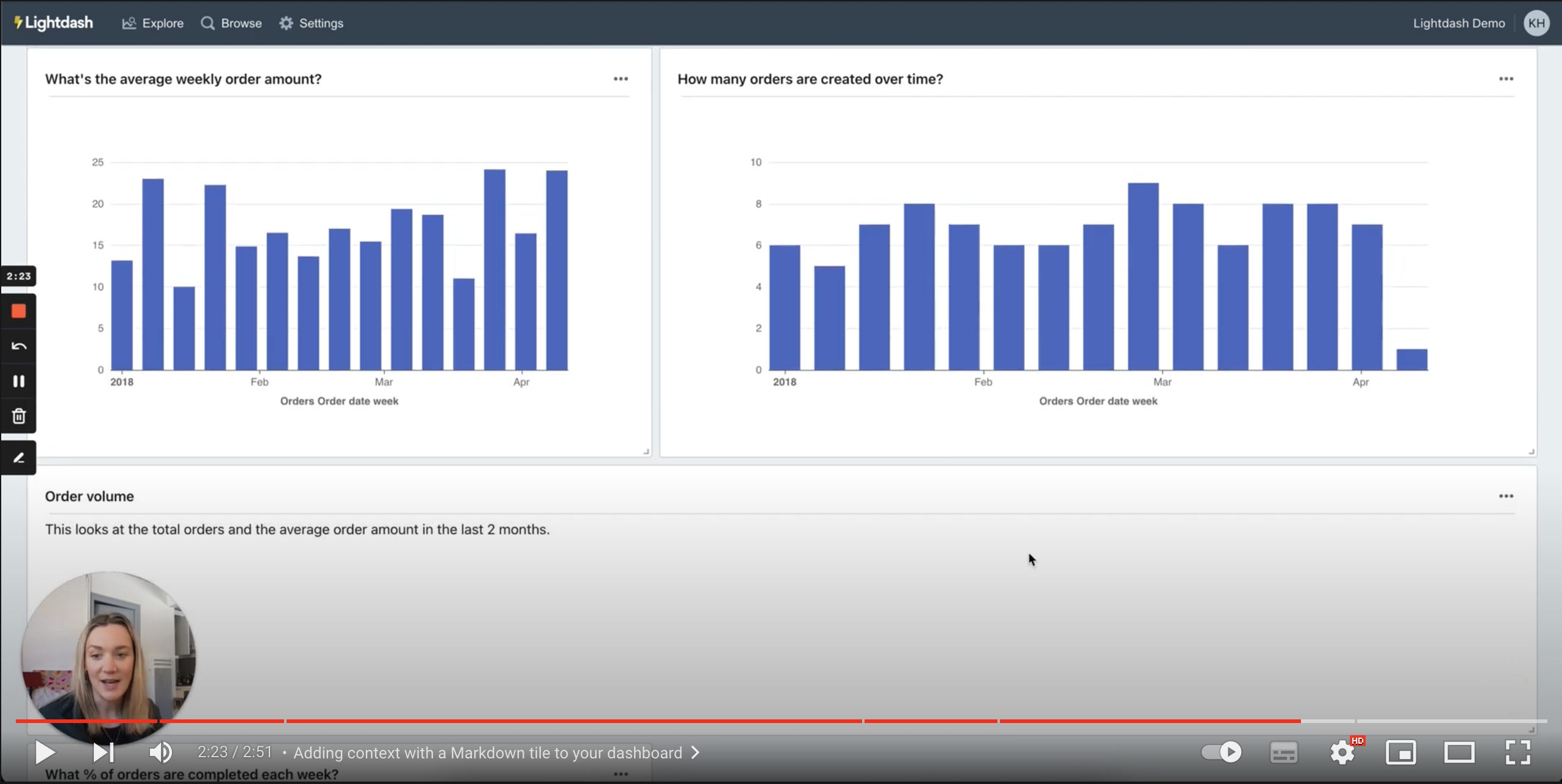
1. Create a new empty dashboard
On the nav bar, click "New" to create a new dashboard.
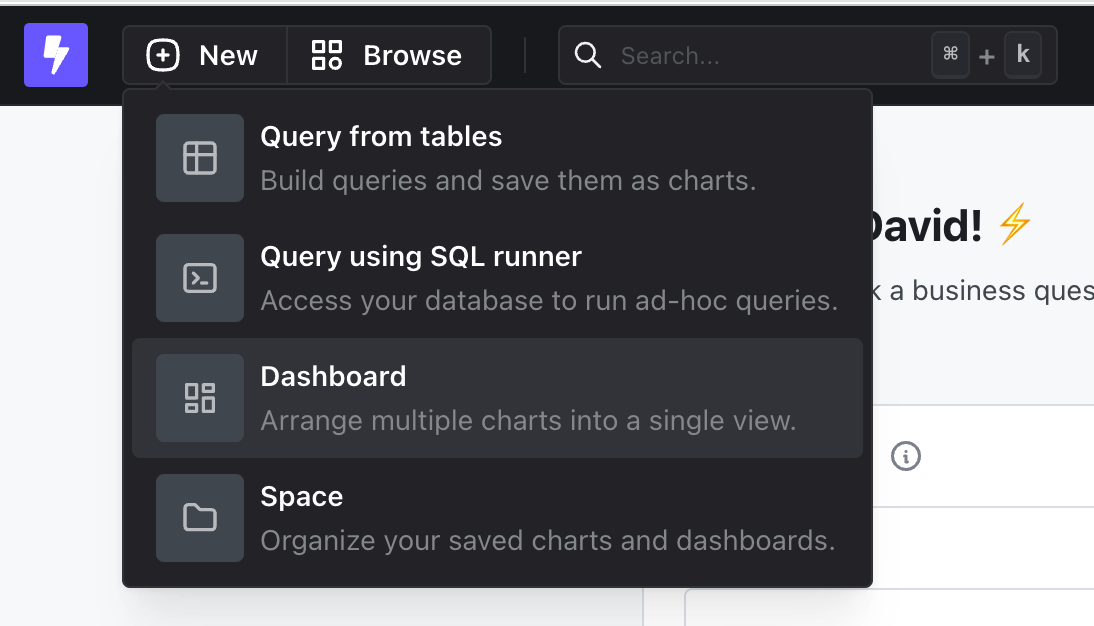
Fill out the details of your new dashboard and hit 'Create'. Once done, you will be redirected to your new Dashboard page:
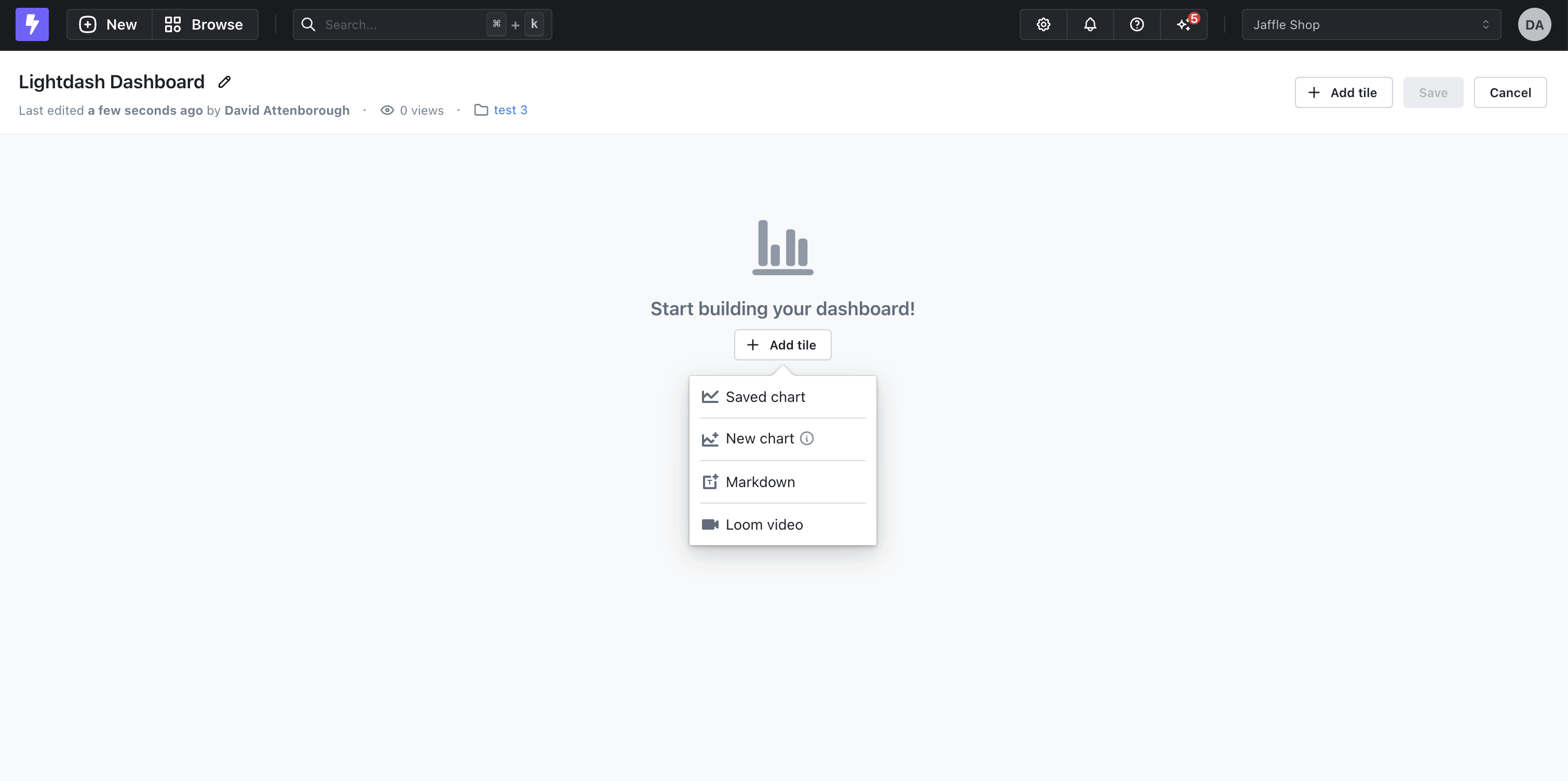
Next, you'll want to add some tiles to your dashboard by clicking on the add tile button.
2. Choose a chart to add to your dashboard
You can either create a new chart from within your dashboard, or you can add an existing chart.
How to create a chart from within your dashboard.
Creating charts from within a dashboard helps to keep your spaces and projects clutter-free from charts that are used only once in a dashboard.
Charts that are created from within your dashboard are exclusive to the dashboard. This means that they can't be reused in other dashboards in your project.
Click "Add tile" and then "New chart" to create a chart that is exclusive to the dashboard. You will be taken to the chart builder. Once you save the chart it will appear at the bottom of your dashboard.
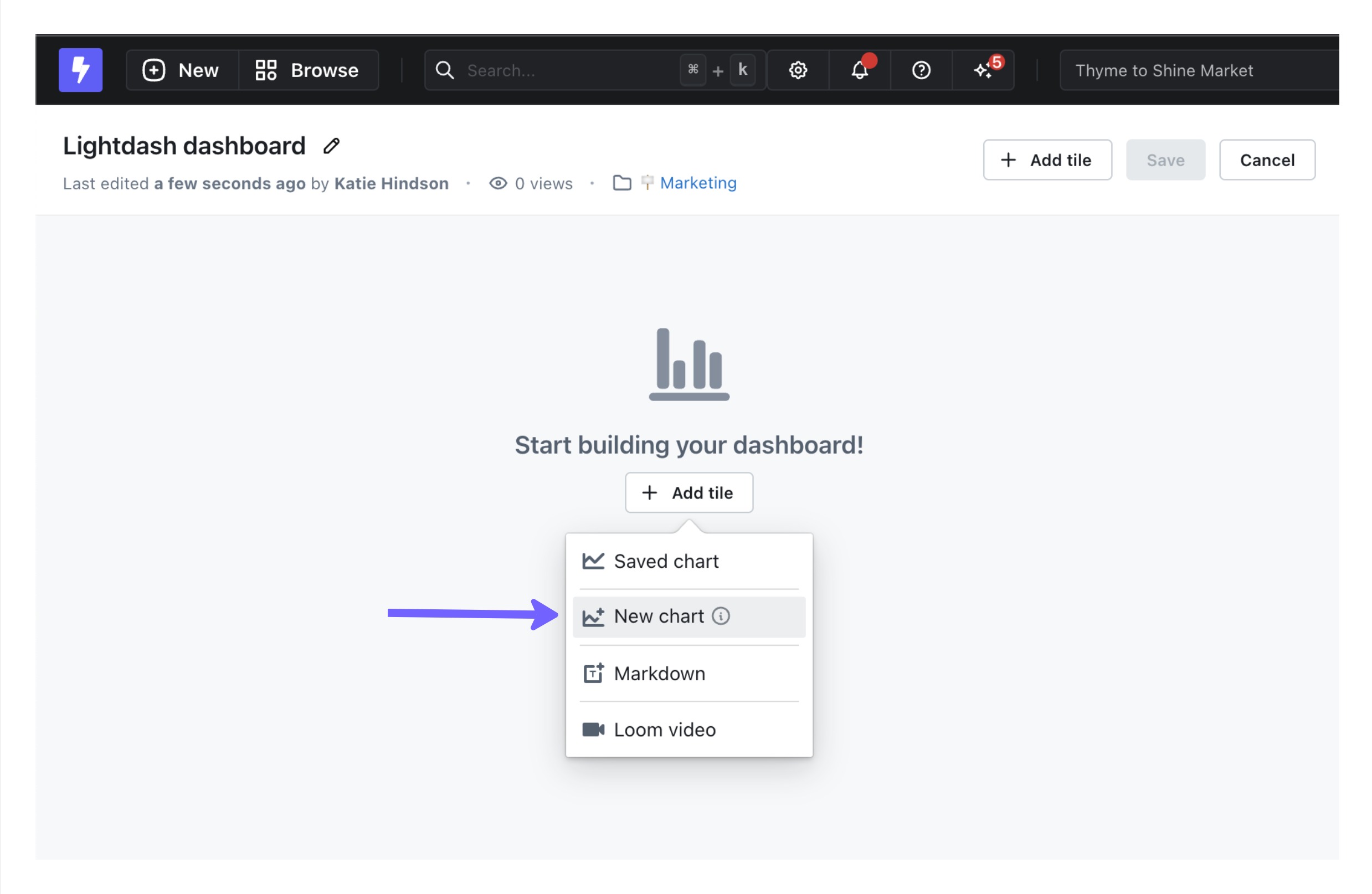
Note: These charts can't be used in other dashboards and won't be shown in the global search or in any space. If you want to make these charts reusable in other dashboards, you can detatch them from the dashboard and save them to a space so they're permanent using the move to space option from the chart's three-dot-menu.
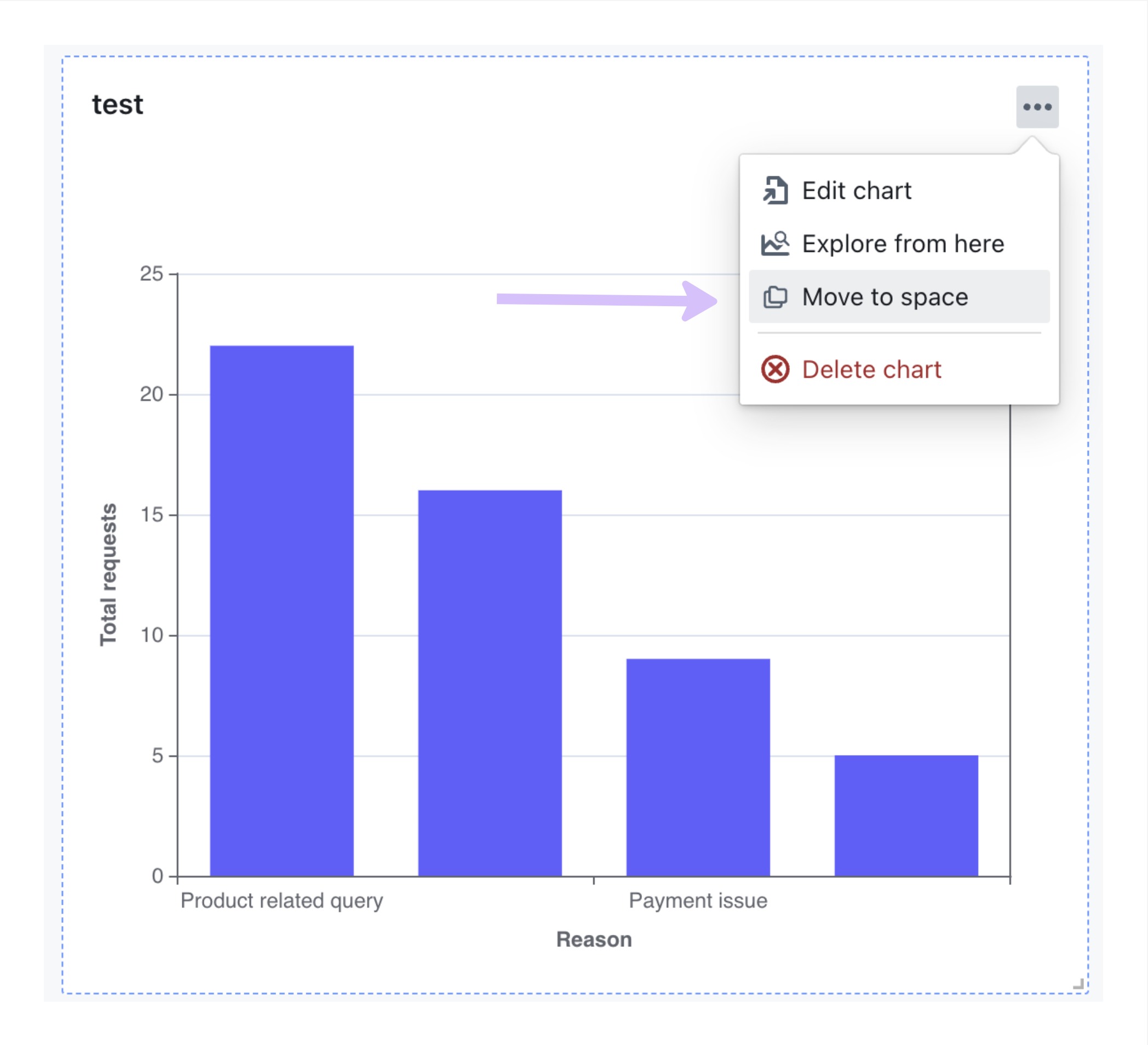
How to add an existing chart to your dashboard.
You can add an existing chart to your dashboard by clicking "Add tile" and then "Saved chart". Clicking any chart will add it at the bottom of your dashboard.
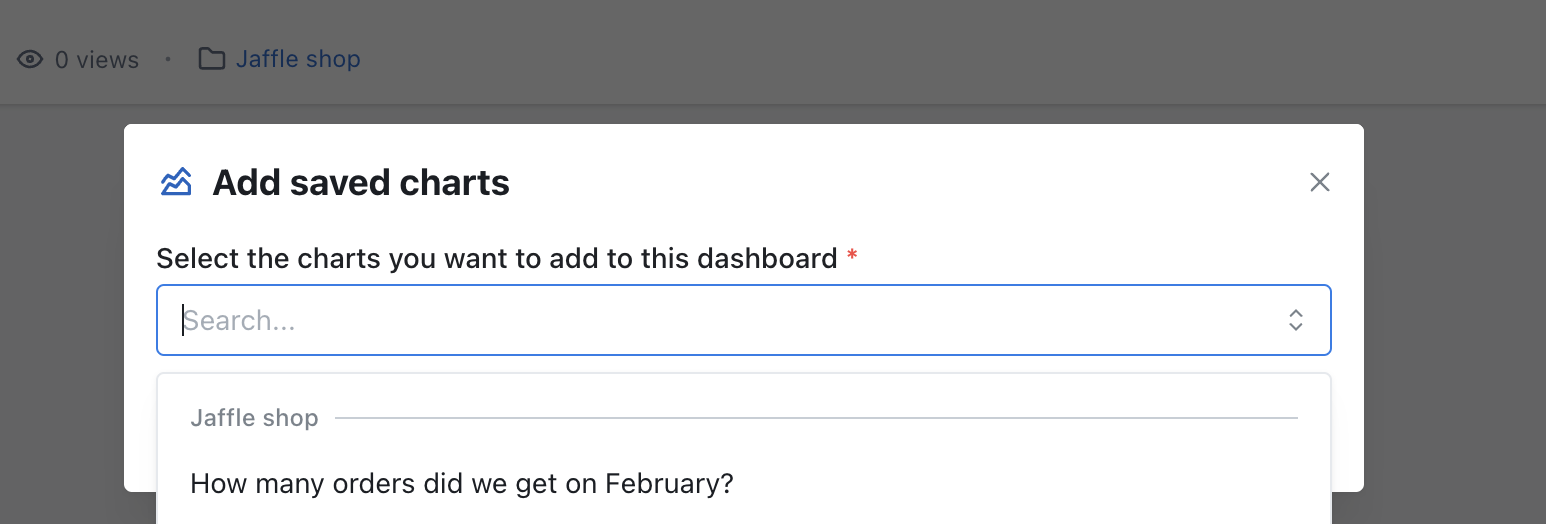
You can resize charts by dragging the lower-right corner.
You can position your chart by dragging the center of the chart.
3. Add markdown or other content
In addition to charts, you can also add markdown tiles or embedded Loom videos to explain the dashboard to people who will be using it.
Markdown tiles
These tiles are very flexible and allow you to enter text with headers, formatting, etc. You can even include code blocks and images within markdown tiles. The built-in editor provides most formatting you'll need.
One option that isn't available in the editor is text centering. That can be achieved like this:
<h2 style="text-align:center">This is my centered title</h2>
Loom videos
All you need to do for embedding Loom videos is click on the Loom video option and enter a URL and title for the tile.
4. Save your dashboard
When you're happy with the layout, hit "Save".
You can also see all of the saved dashboards in your project by clicking on Browse --> All Dashboards.

5. Add filters to your dashboards
Now let's add some filters to your dashboard. First, start by editing your dashboard by clicking on the Edit dashboard button.

Click on the Add filter button to add a new filter to your dashboard by selecting a field and a value to filter by.
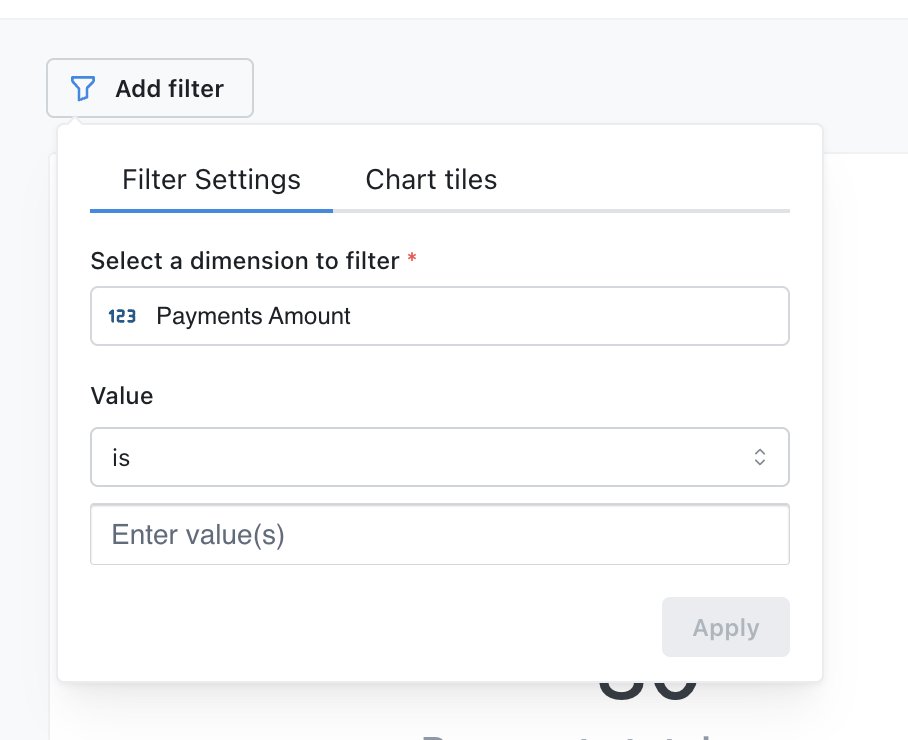
Select a value to filter by and hit Apply. You can add as many filters as you like.
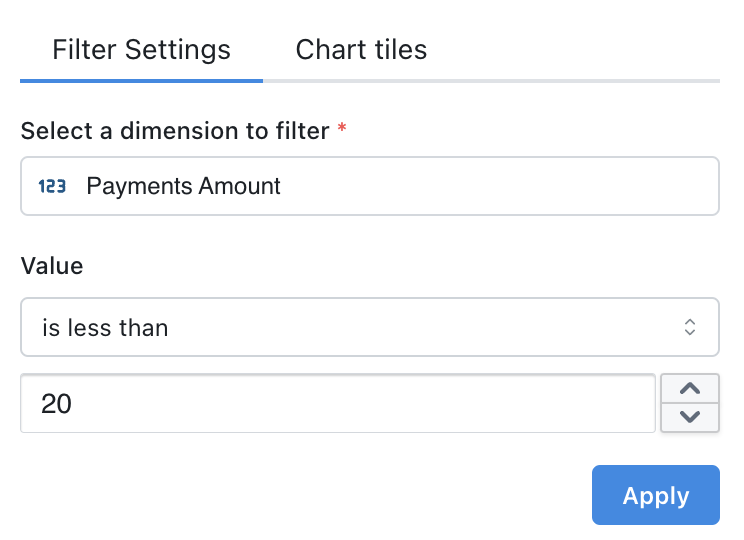
Now that you've added a filter, you can see the filter applied to your dashboard.
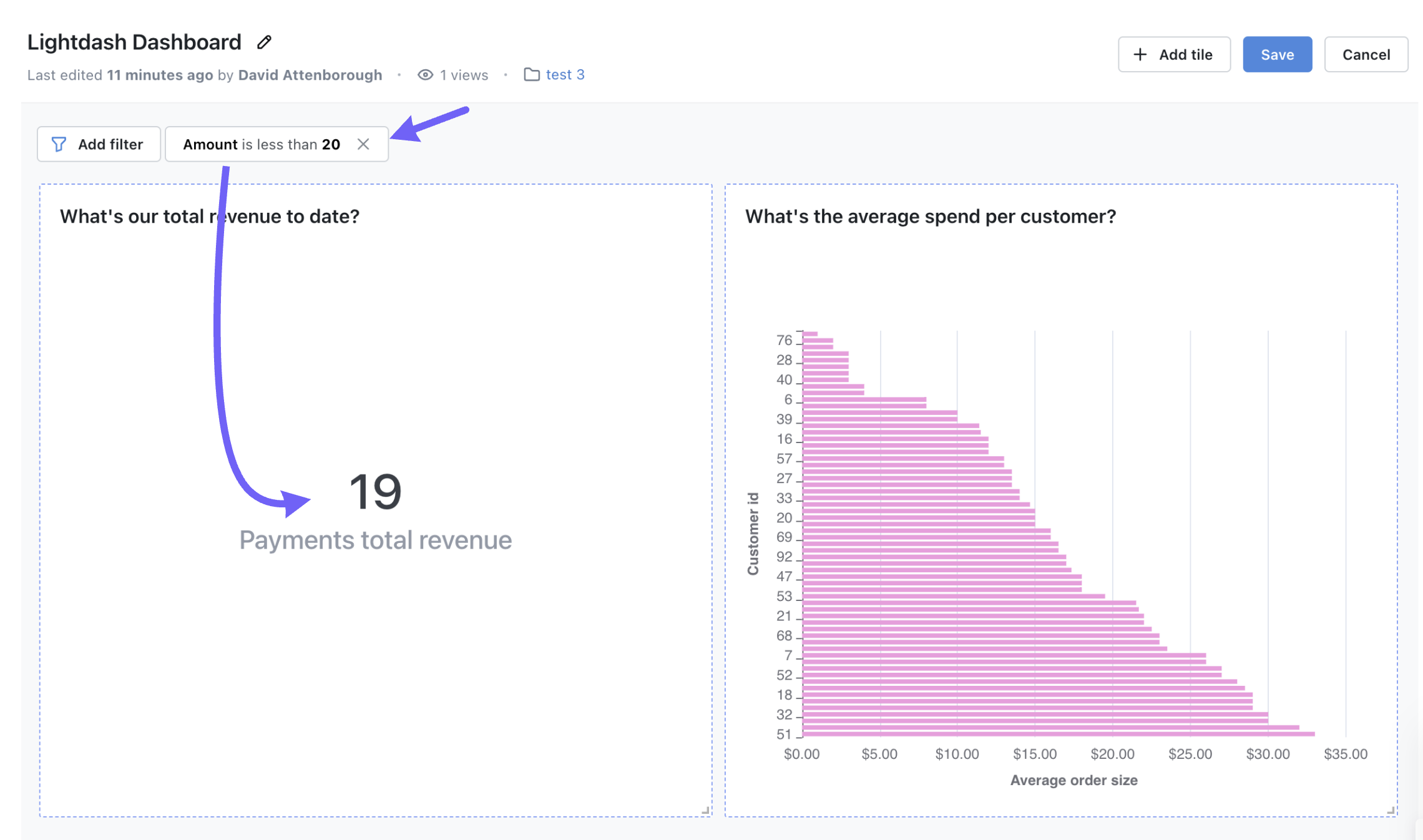
Hit Save to save your dashboard with the new filter.
Leaving filters empty
You might want to add an empty-value filter so that your dashboard viewers can choose their own value and explore the data based on their own criteria. Your dashboard viewers might also want to add their own filters to your dashboard.
Adding an empty-value filter
Just edit your filter and ensure that you don't provide a default value.
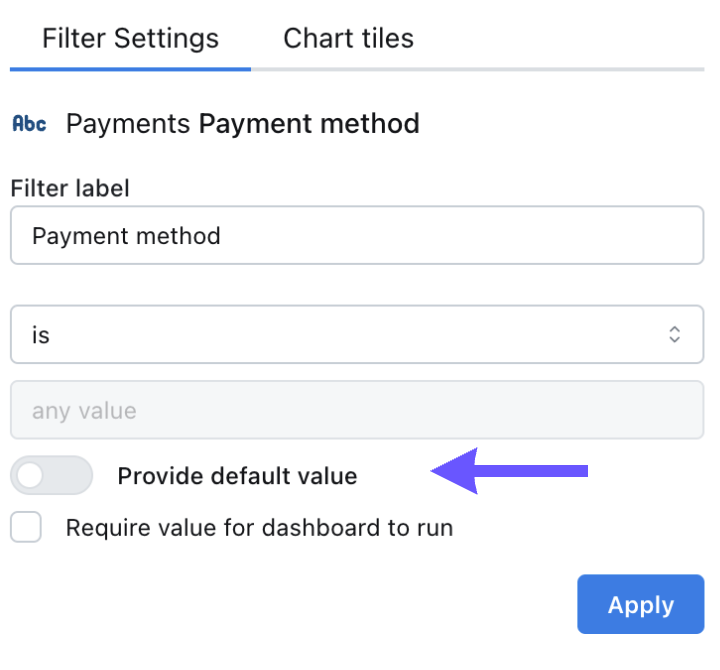
Marking a filter as required for the dashboard to run
You can mark a filter as required for the dashboard to run. This means that the dashboard will not run unless a value is selected for the filter. Just edit your filter and check the "Require value for dashboard to run" checkbox.
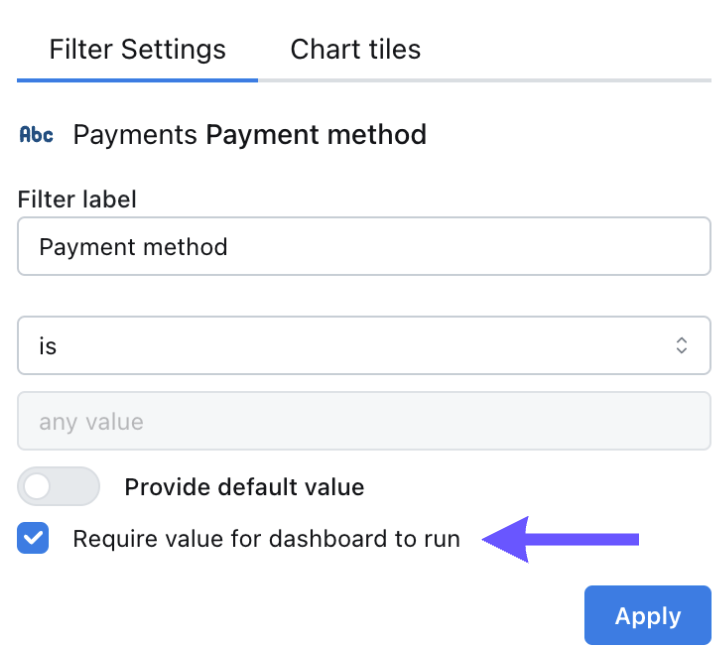
Until viewers have set a value for the filter, the dashboard will not run.
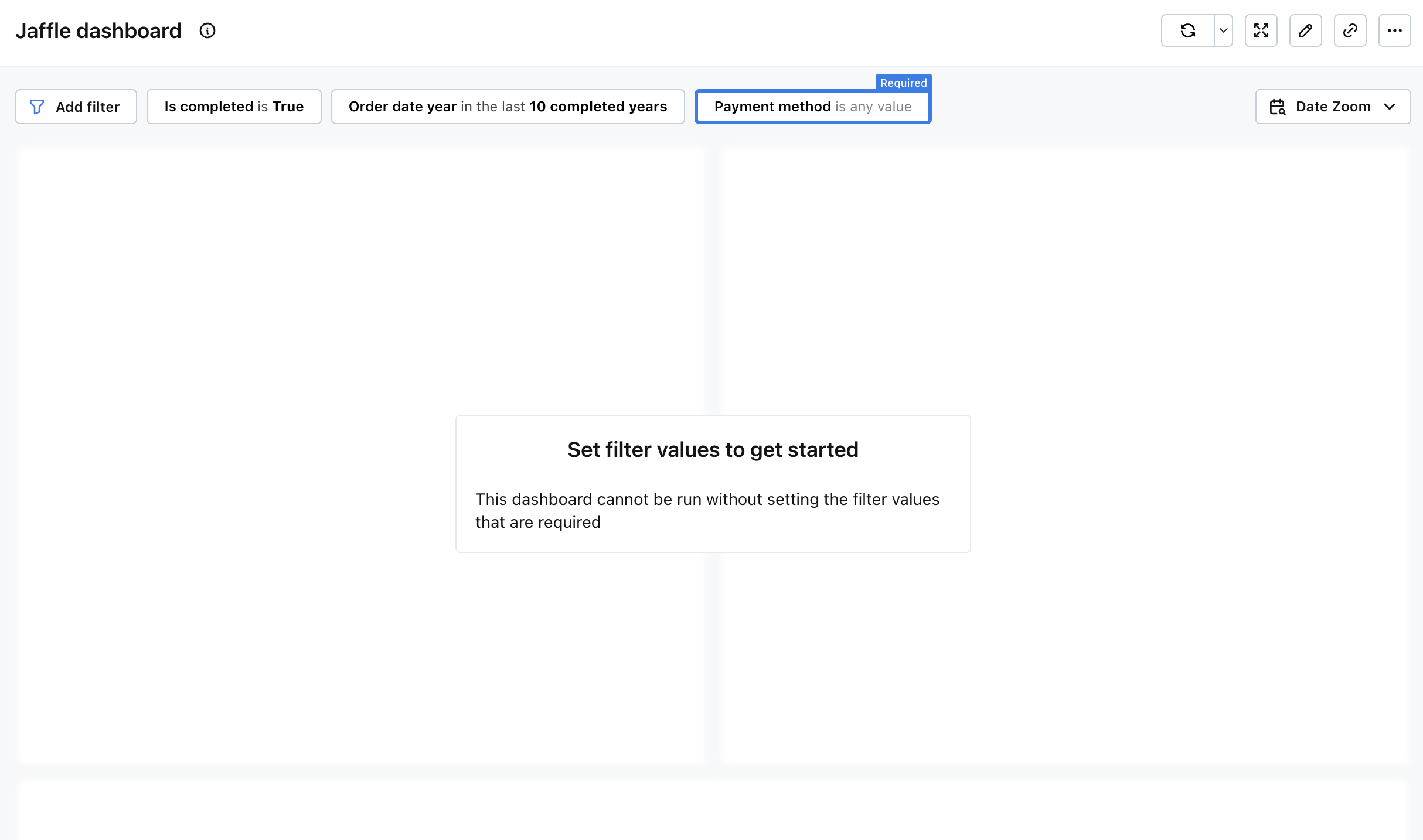
To learn more about adding filters to your dashboards, check out our guide on using filters.
6. Share your dashboard
You might want to share your dashboard with other people in your organisation. You can do this by copying the URL (or by pressing on the 🔗 button).